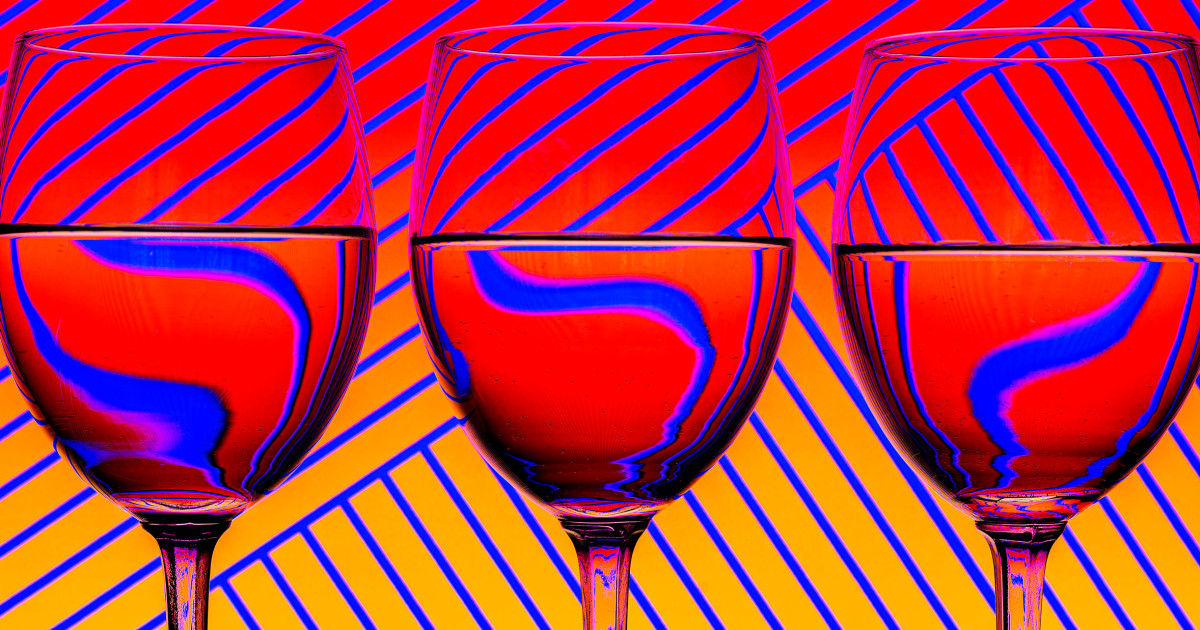Why this could be the beginning of the end for ‘Dry January’

Today is the last day of Dry January, a yearly “holiday” celebrating temporary sobriety. In the past, this temporary experiment has paired nicely with New Year’s resolutions and renewed regularity at the gym, all to be quickly forgotten come February. But for an increasing number of millennials and Gen Z, going sober isn’t an annual health challenge.
Millennials like to go out, not burn out.
The Covid pandemic may have accelerated this trend, with its isolation fueling increasing rates of drinking, followed by a backlash. On Instagram, friends and influencers cheerfully evangelizing about their new sober lifestyles proliferate. This growing push for a truly inclusive nightlife scene is shifting us all toward a cultural sea change — and perhaps the beginning of the end of America’s all-or-nothing approach to alcohol. 2024 feels like an anti-tippling tipping point.
For an increasing number of millennials and Gen Z, going sober isn’t an annual health challenge.
I feel like my fellow Gen Xers did not exactly set a great example. At least anecdotally, I have watched many friends maintain their party-hearty heavy-drinking lifestyles until they were forced to quit completely, either for physical health reasons, family obligations or alcohol use disorder. My newly sober friends are now absent after dark. For my generation this seems normal, but I think we can all agree it’s not a great approach.
Luckily, younger generations are changing these patterns and drinking — or not drinking — more deliberately. Terms like “sober curious” and “mindful drinking” refer to increased awareness of the downsides of drinking and more conscious decision-making that doesn’t always have to do with traditional addiction.
Books like “We Are the Luckiest: The Surprising Magic of a Sober Life” and “This Naked Mind,” along with a plethora of podcasts, blogs and social media accounts extoll the benefits of the lifestyle in often positive terms, highlighting the ways giving up or reducing drinking can improve your life — even if your life felt OK before. Something called “sober tourism” features sober tour companies. Meanwhile, mocktails are popping up on everything from Michelin restaurant menus to your local bar’s blackboard. Gone are the days when Dry January meant miserably sipping a seltzer in the corner.
There is a parallel here, I think. In the mid-1990s and earlier, many restaurants didn’t cater to vegetarians very well. The choices for us were separate hippie veggie restaurants or “regular” restaurants that begrudgingly offered a cooked-from-frozen veggie burger or an extra-large iceberg salad. Today, of course, most restaurants plan for vegetarians and vegans, and often offer gluten free, dairy free and other menu options. And importantly, chefs now attempt to make these special meals of equal quality to the restaurant’s regular dishes.
But that’s what’s still currently missing in many cocktail bars.
Despite the homemade ingredients and freshly squeezed juices and sometimes clarified, centrifuged, deconstructed drinks on menus, nonalcoholic cocktails are often still an afterthought, even at top-rated spots. This is not a recipe for future success.
I don’t have statistics to back this up, but the cocktail bars I see with younger cosmopolitan customers seem to offer more and better low- and no-alcohol options. Natural wine bars (optimized for low-ABV options) seem to be thriving.
To be fair, adjusting your menu to include more mocktails has its challenges. In addition to being free from alcohol, some patrons also want their drinks to be free from sugar and calories; others want them to taste identically to existing drinks; still others wouldn’t mind if they contain cannabis, caffeine or other “functional” elements that create a sense of relaxation or a buzz. And then there’s the price point: Many, if not most, customers expect to pay less for these mocktails than they would for drinks with alcohol.
While a glut of new nonalcoholic “spirits,” liqueurs and aperitif/digestifs has entered the market over the past few years, frankly a lot of them are not very good — especially the ones meant to imitate base spirits. I’ve sampled many zero-proof gins and nearly all taste like perfumed water with capsaicin added for spice; the whiskeys taste like caramel and that same capsaicin. Some have xanthan gum or other thickeners to increase the liquid’s body, but these can register as slimy on the palate rather than weighty.
Worse yet, these new alcoholic substitutes can cost as much (or more) per bottle than the spirits they’re meant to replicate. (There’s a vegetarian parallel here too: faux meat burgers can cost more than the ones that come from cows.) That can make nonalcoholic cocktails less profitable on a per-drink basis.
Millennials traveling in more mixed-consumption groups highlights a potentially key, stigma-busting breakthrough.
Overcoming these obstacles is the job of each bar’s lead mixologist. Part of the trend — a very positive part — is the way sober and nonsober friends are mingling. Millennials traveling in more mixed-consumption groups highlights a potentially key, stigma-busting breakthrough. A sober-inclusive culture will be more successful if it doesn’t silo individuals and groups based on their needs and preferences. This has long been a problem for people who don’t drink — where can you go to hang out or bond with co-workers when the culture assumes that entertainment revolves around drinking?
I think the future is not about separate spaces for drunken wild times or else full, forced sobriety, but about de-emphasizing/decentralizing alcohol as the core of socializing. Coming together over art or culture or food or drinks is a list of excuses for coming together; not a list of justifications for getting tanked.
Maybe in a few years we won’t be talking about Dry January at all — because we won’t need a special month for people to “test out” a dryer lifestyle. As better nonalcoholic options proliferate and the stigma around sobriety eases, it’s certainly possible that choosing not to drink will become as common as choosing not to eat meat.


